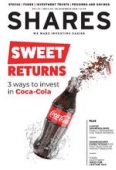Archived article
Please note that tax, investment, pension and ISA rules can change and the information and any views contained in this article may now be inaccurate.
Watch out for funds with inappropriate benchmarks

Many fund managers insist that investors should judge their performance on a relative basis, rather than absolute. The argument is that fund managers are being paid to outperform an index rather than explicitly deliver positive returns every single year.
To abide by this rule one has to be sure that the relative benchmark is appropriate. For example, if the fund invests solely in UK equities then its benchmark for relative performance should be a UK index. If it invests globally, its benchmark should be a global index.
We don’t believe investors pay enough attention to the appropriateness of the benchmark and we are concerned they could potentially be misled by the performance figures.
PRESSURE ON FUND MANAGERS
The industry is under pressure to improve how it operates and this includes benchmarking. In February the Financial Conduct Authority (FCA), a regulator, published a policy statement laying out how it expects fund managers to disclose their objectives.
It also set out rules for managers to explain which benchmarks they use and why. Wherever fund performance data is given, it should be shown against each benchmark which has been used as a target.
If the fund doesn’t use a benchmark, the manager needs to explain how investors are expected to measure the performance of the fund.
The rules came into force in August and apply to all open-ended collective investment schemes, yet there are still a number of closed-ended funds which either don’t seem to have an appropriate benchmark or which could make it much clearer to investors how to measure performance.
HOW DO POPULAR FUNDS BENCHMARK PERFORMANCE?
Fundsmith Equity (B41YBW7) provides a choice of three benchmarks for investors to measure performance.
First is the MSCI World Index in sterling which, as the fund factsheet says, is ‘a generic portfolio of global equities across all sectors and, as such, is a fair comparison given the company is also global and sector agnostic’.
The second is a composite index of UK five-year and 10-year bonds, while the third is the three-month LIBOR (London Inter-Bank Offered Rate) interest rate. Frankly the last two are superfluous since the fund only invests in global equities.
Lindsell Train Global Equity Fund (B644PG0), which invests in a small number of high-quality global stocks, also uses the MSCI World Index in sterling as its benchmark which makes comparing both funds straightforward.
INAPPROPRIATE BENCHMARKS CAN FLATTER PERFORMANCE
When running the slide rule over a fund as a potential investment it’s crucial to know which index is being used as the benchmark or performance target. If a fund is using the wrong benchmark it can present a misleading picture of how well the fund has done.
A good example of a fund using an inappropriate benchmark is investment trust Manchester & London (MNL). It uses the MSCI UK Investable Market index as its benchmark despite having a portfolio that is dominated by US-listed shares.
Its financial results for the year to 31 July show 9.8% total return versus 1% from its benchmark index. On paper that suggests significant outperformance, however it would be wrong to compare its results to that of the UK stock market given how it barely invests in it.
In particular, its latest financial results even state that the board considers the most important key performance indicator to be the comparison with its benchmark index.
If you were to compare Manchester & London’s results to one of the main US stock market indices, the level of outperformance would be significantly smaller. For example, over that same 12 month period to the end of July, the Nasdaq 100 achieved an 8.5% total return and the Nasdaq Composite achieved 6.6%. Both of these results are much greater than the MSCI UK Investable Market’s 1% used as its benchmark.
When asked to justify the use of the UK benchmark for performance measurement, the managers pointed to the fact that most of trust’s investors were domiciled in the UK and that by extension want to beat a domestic benchmark. This makes no more sense than using a French benchmark if most of the investors happened to be based in France.
COMPLICATED SITUATIONS
Another example to consider is Lindsell Train Investment Trust (LTI). More than half (52.2%) of its portfolio is invested in the unquoted Lindsell Train Limited asset management business. Having such a high weighting to a single stock and one that isn’t listed on the stock market complicated matters from a benchmarking perspective.
Admittedly the investment trust does try to accommodate for the situation. Rather than comparing itself to something like the FTSE All-Share index, its benchmark is an index of the annual average running yield on the longest-dated UK government fixed rate bond plus 0.5% with a minimum yield of 4%. But even then there is a debate as to whether that’s the best way to compare performance.
INDEX PROBLEMS
In some overseas markets using the local index as a benchmark can itself produce a misleading picture due to the composition of the index.
A prime example is the Russian market where the top three stocks in the benchmark RTS index – energy firms Gazprom and Lukoil and bank Sberbank – account for over 45% of the value of the market.
Unless a fund investing in Russia has at least the same weightings in these three stocks it is taking a great deal of risk by being ‘off-index’ and its performance shouldn’t be compared with the benchmark.
It is a similar story in India where the top 10 stocks in the Sensex 30 account for 70% of the value of the index and where a balanced approach to portfolio construction comes up against a market heavily weighted towards financial and software stocks.
Important information:
These articles are provided by Shares magazine which is published by AJ Bell Media, a part of AJ Bell. Shares is not written by AJ Bell.
Shares is provided for your general information and use and is not a personal recommendation to invest. It is not intended to be relied upon by you in making or not making any investment decisions. The investments referred to in these articles will not be suitable for all investors. If in doubt please seek appropriate independent financial advice.
Investors acting on the information in these articles do so at their own risk and AJ Bell Media and its staff do not accept liability for losses suffered by investors as a result of their investment decisions.
Issue contents
Editor's View
Exchange-Traded Funds
Great Ideas
Great Ideas Update
News
- Japan’s public pension fund bans short-selling on ESG grounds
- Black Friday boost for retailers including Boohoo
- Good and bad: how the Tories and Labour could impact your wealth
- Investors ‘may only see small UK market bounce’ on a Tory majority win
- Activist investor accuses mainstream managers of ‘greenwash’
- What are the prospects for oil prices and big oil firms?

 magazine
magazine











